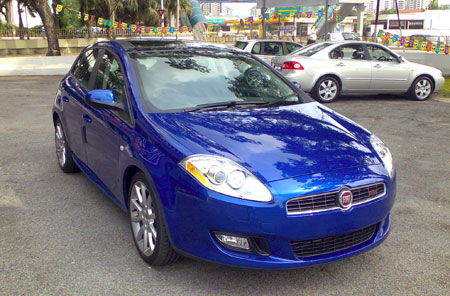
People who value a fun drive in Malaysia now have another option to choose from in the form of the Fiat Bravo GT 1.4 T-JET, boasting a 1.4 litre turbocharged engine putting out 150 horsepower mated to a 6-speed manual gearbox.
This test drive was rather short and spontaneous – a friend and I just happened to see a Fiat showroom on our way back from lunch today, so I had to snap the photos with my camera phone. Also, this writeup is based on a rather short drive for just a few kilometers as it was a typical showroom test drive.
Read my impressions of my short but fun experience with the turbo Bravo after the jump.
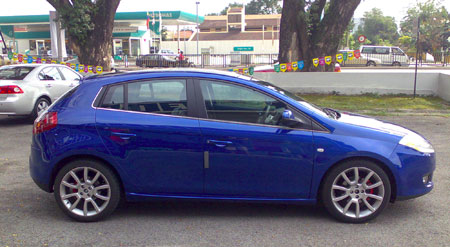
The Fiat Bravo GT 1.4 T-JET definitely looks the business – a proper hot hatch look with it’s bodykit and huge 18 inch wheels. The showroom brochure had listed the wheel options ranging from 15 inchers to 17 inchers, but somehow our Malaysian cars were specced with 18 inch 10 spoke Fiat wheels which dwarfed the little brakes hiding behind them. But a combination of a minimal fender to tyre gap and the size of the wheels in relation to to the car’s rather small body made the rest of the car look very sporty.
There are three colours available – 106 Maranello Red, 891 Crossover Black, and 487 Cool Jazz Blue. All three colours have matching colour coded interiors, which is a nice novelty that adds to the rather upmarket appeal of the car.
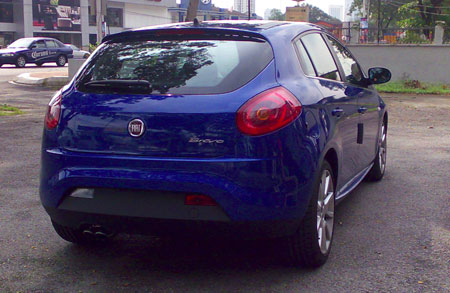
In terms of styling of both the exterior and the interior, I’ve got to give it to the Italians, they really know what they’re doing. Fiats and Alfa Romeos are the automotive embodiments of the word sexy. When you get into the car, you feel like you’re in a very upmarket car.
Fiat has put in so many nice touches to the interior – every surface feels great to touch, and somehow Fiat has managed to achieve this without wrapping every damn thing including the dashboard with Alcantara or similiar materials.
The dashboard is mainly made of a soft touch plastic with little carbon fiber-like imprints all over it – you can somewhat see it in the photo above if you view the enlarged version.
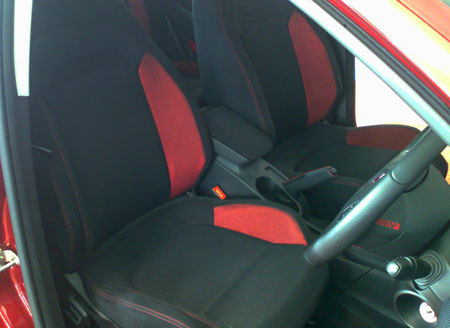
As I’ve mentioned before, the interior trim and stitching is colour coded to the car’s exterior. In the blue car, you get blue colour-coded trim and blue stitching on the leather bits, while in the red car you get red trim and red stitching.
There was no black car around the showroom – just a red showroom car and a blue test drive car so I don’t know if the black car’s stitches are black or some other contrasting colour, perhaps silver?
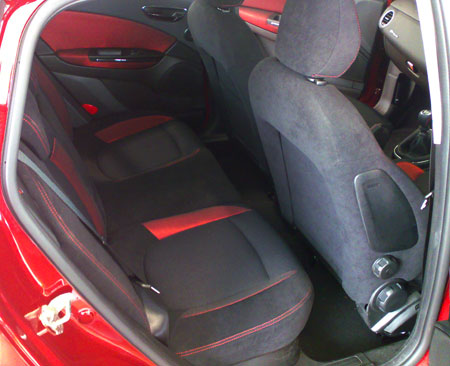
The Fiat Bravo is supposed to be a C-segment hatchback – this means the likes of the Peugeot 308, the Kia Cee’d and the Civic hatchback are its competitors, but it certainly doesn’t seem so from the inside. It seems more like a big B-segment car of the old days, in fact the big B, small C segment Nissan Latio hatchback is larger than it.
The rear hatch opens with a solenoid – you just press the Fiat logo and the hatch pops loose. Lift the hatch up and you’ll see a 400 litre boot, which can be extended to 1175 litres if you fold the rear seat bench down.
The interior will be a rather tight squeeze if you fill it up, but for the driver it’s comfortable with the Alcantara-wrapped bucket seats being height adjustable, and the seats slide rearward sufficiently for my long legs, at the expense of ALOT of rear legroom of course. The nice leather steering wheel (which I felt was slightly slippery, more about steering later) was also both rake and reach adjustable.
Peering back at you from behind the steering wheel are two large whitish-backed gauges enclosed in hoods shielding it from the glare of the sun. One is for speed and the other is for engine revs, and both meter panels start with the meter needle pointing south, very similiar to Alfa Romeo gauges – probably they are the same design with different faces.
At night, the gauge face’s needle and markings light up in sporty red.
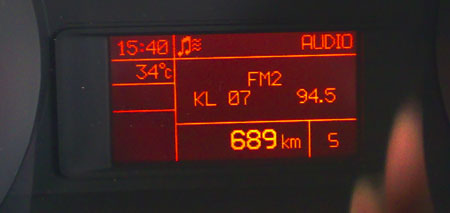
In the middle of the two meter “pods” is a multi-information display offering various information from different sources such as data from the in-car entertainment system, time, trip meter information, and also various indicators such as the little S which stands for whether the Sport mode is activated, more on what the Sport mode is later.
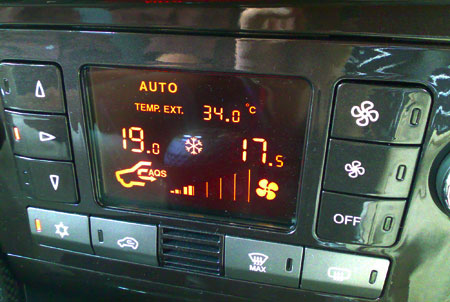
Below the in-car entertainment system panel is the climate control panel, which features single zone automatic climate control. This system also includes a single air conditioning vent for the rear passengers.
This makes the Fiat Bravo GT the only other C-segment car under RM150,000 other than the Ford Focus sedan and hatchback to have rear passenger air conditioning vents.
If you lift up the center arm rest, you will also find a little compartment which is cooled, perfect for chilling your drinks on a hot day.
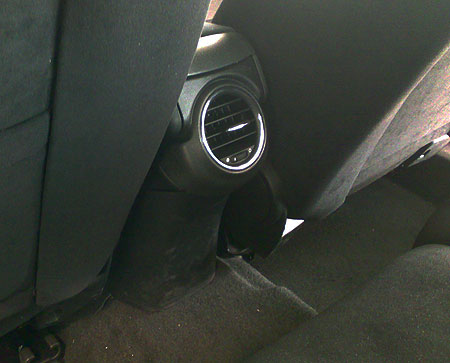
You must already be thinking this car is seriously specified with very high levels of equipment, but the list does not stop at there. If you look above you will find that the car has a sunroof for the front and a moonroof for the rear, allowing both the front and rear passengers to enjoy a view at the sky if they want to.
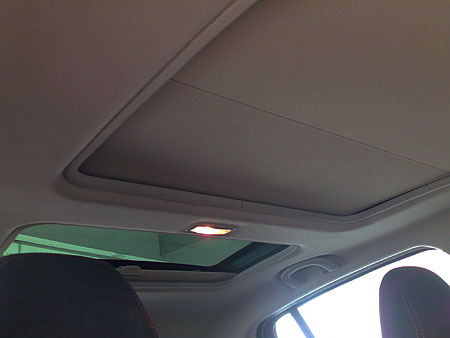
A little on the specs list – you’ve got bi-xenon headlamps with headlamp washers, and foglamps. There are also 8 airbags, yes… EIGHT AIRBAGS. The other number 8 in this car’s impressive feature list is the amount of speakers, an 8.1 setup to be exact.
The single disc player sends it’s output to 8 speakers and one subwoofer with its own enclosure in the boot – that’s a speaker and a tweeter on each of the Fiat Bravo GT 1.4 T-JET’s four doors.
The audio system also supports playing MP3 files either loaded from a CD, or a thumb drive which you can plug into the supplied USB port below the climate control panel.
Other safety features include ABS anti-lock brakes, Fiat’s Anti Slip Regulation (ASR) system which helps regulate wheel spin during hard acceleration, ESP stability control for corner stability, and for those who are just revisiting the manual gearbox after a long stint with automatics, there is the Hill Holder feature which helps you hold on to the brakes for a while while you are preparing your clutch and accelerator action to roll off from a stand still on an incline.
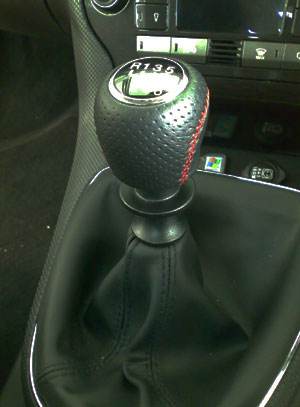
The shift knob has a similiar colour-coordinated stitching as the rest of the car. There are 6 cogs to pick from, and to engage reverse you have to pull up a lever. The knob itself feels good in your hands, unlike the Cooper S which has an odd bevelled top that sometimes feels uncomfortable.
For those who recognize the little colourful thing in the background, you may be wondering what the little Windows logo is doing in this car. Well, this particular Fiat is equipped with Fiat’s Blue&Me system, jointly developed by Fiat and Microsoft and based on Microsoft’s Windows Mobile for Automotive platform. The USB connectivity that enables the audio system to read MP3 files from whatever storage devices you have (such as an Apple iPod, or a vanilla USB thumb drive) is part of this system.
The Blue&Me system also includes a hands-free system controlled by voice commands. It connects to your mobile phone, and enables the car hands-free system to have access to your phone book and SMS inbox. It can also display your SMS messaged on the MID display, or read aloud your SMS messages using a text to speech feature, which allows you to read your incoming text messages while safely keeping your eyes on the road.
I did not get to try out this system as I did not know it even existed – just found out what it was after looking around on the net for information on why there was a Windows logo in a sporty Italian hatchback.
While we’re still waiting for Volkswagen Malaysia to introduce the 1.4 TSI here in Malaysia, the Fiat Bravo GT 1.4 T-JET already has a turbocharged 1.4 litre engine. The 1.4 litre DOHC turbocharged engine has a nice typical Italian growl and makes 150 PS at 5,500rpm and 206Nm of torque at 2,250rpm.
You can feel the turbo properly kick in at about 2,500rpm, but on the higher gears it will kick in earlier at just below 2,000rpm. It’s nothing frantic, but definitely fun and good for a 0-100km/h sprint of 8.5 seconds, and you will never guess the engine has a displacement of 1.4 litres – the wonders of turbocharging!
Press the little Sport button to the left of the audio player and the engine’s torque curve changes because of a small increase in boost pressure, peaking at 230Nm at 3,000rpm before it drops to the original torque levels.
Honestly, I did not feel any increase in power, but there were 3 people in the car so maybe it is more noticable with only the driver in the car.
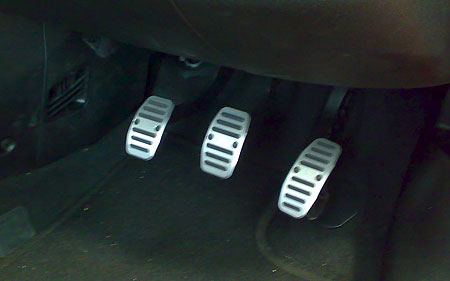
The Sport button also sharpens throttle response and increases the DualDrive Electric Power Steering’s steering resistance, which is actually rather light to begin with. A bit too light for a car with sporty intentions, and there is not much feedback either, but this light steering wheel is rather welcome during normal town driving and parking. So hit that Sport button when you approach the bends.
The chassis feels rigid, though that remains to be confirmed because of the short test drive and kinds of roads I drove on – mainly around the showroom vicinity. The suspension is firm, and could be potentially crashy if you meet the typical badly maintained uneven roads of Malaysia, littered with many mini potholes and the occasional large one. Extra care should definitely be taken in avoiding these to protect the Bravo GT’s large wheels, wrapped with 225/40R18 Pirelli P-Zero Rosso tyres.
The brakes were quite bitey and the pedal might seem a little too light and sensitive to those who drive the car for the first time, but you will soon get used to the feel of the brakes. Looking at how lost the discs seem behind the 18 inch wheels, you may want to look into better brakes if you ever decided to exploit the turbocharged engine’s tune-up potential.
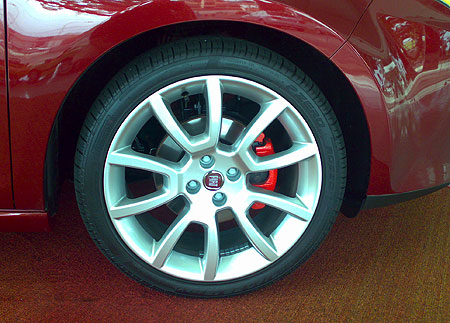
The Fiat Bravo GT 1.4 T-JET is a rather interesting addition to the Malaysian car market – for a small C-segment car under RM150,000 it has an insanely high equipment level and great feel-good, feel-expensive interior ambiance. I love the little design details such as the shape of the door handles, and the rear lamps which pay homage to the old Fiat Bravo hatch that Fiat sold before it was replaced by the ill-fated Stilo.
It costs only RM135,000 on the road exclusive of insurance, which makes the price seem worth considering, especially when you look at its equipment level and the engine under the hood. However, the beautiful Fiat Bravo gives me the impression that the designers had a dream, but along the way the vendors and procurement people messed it up. Some pieces of the car are rather shoddily put together, with noticable gaps and misaligned panels to be found all over the car. The paint behind the rear hatch which is visible when you lift the hatch up is also rough – you can really notice the difference in paint quality on the visible and not so visible parts of the car.
Another concern is Torino Motors’ service network – according to the sales advisor they have one 3S center in Ulu Klang, Ampang but that seems to be it. If you don’t mind or have your own solution to any of these – the car should be a great choice. I know I wouldn’t mind the little uneven gaps here and there – the car is fun and makes up for it.
The sales advisor told me warranty for the car is for 2 years, but Torino’s website says 3 years, so it could be either one – double check with the showroom if you decide to have a look at the car for yourself.
All photos snapped with the Nokia E90
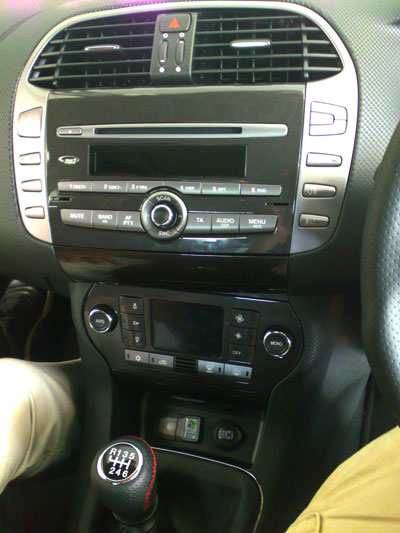
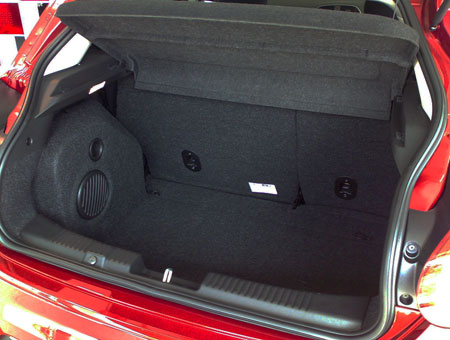
Click to enlarge – Notice the subwoofer on the left hand side of the boot?
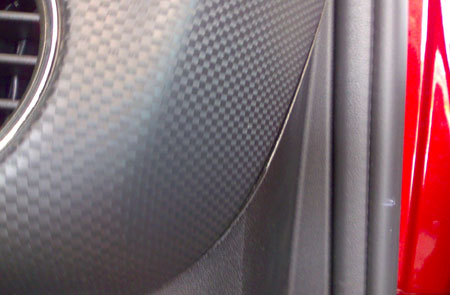
Bad panel fitment can cause unsightly gaps, but thankfully mostly hidden from eyes
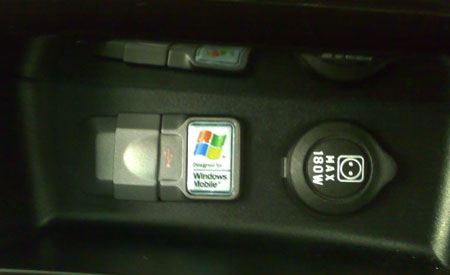
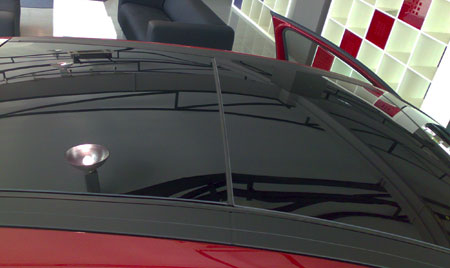
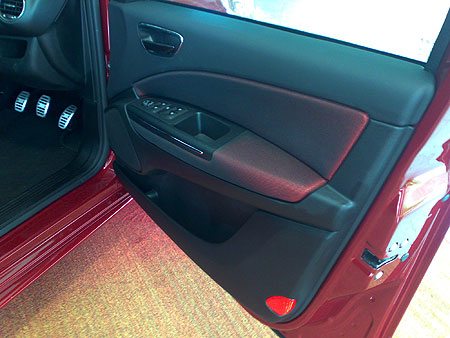
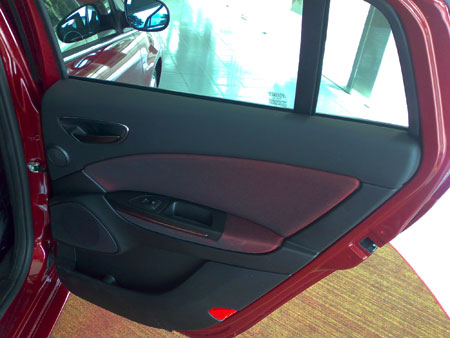
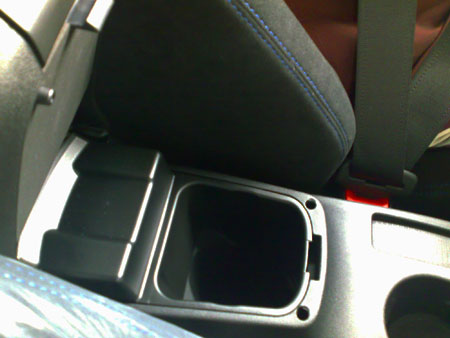
Looking to sell your car? Sell it with Carro.

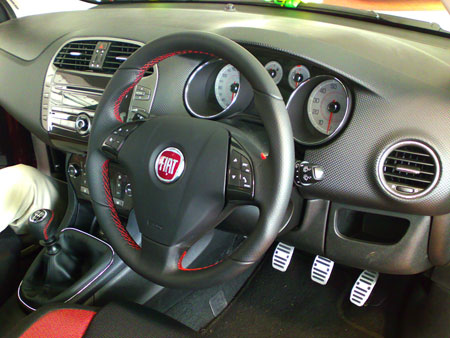
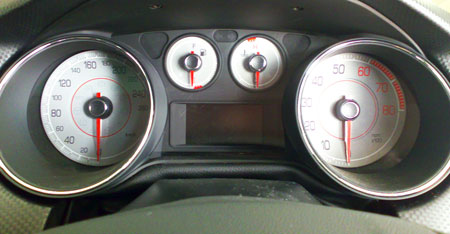
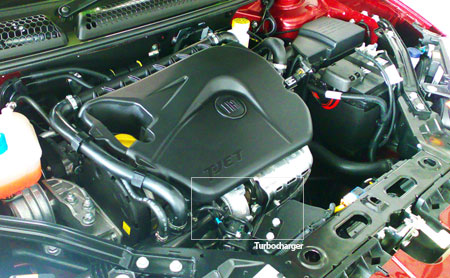
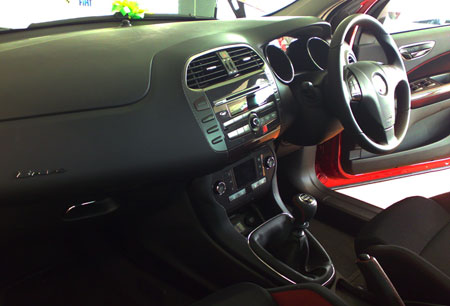
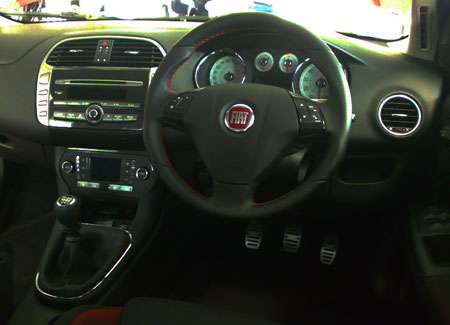

AI-generated Summary ✨
Comments on the Fiat Bravo GT 1.4 T-JET highlight its attractive design, strong features, and good performance for its price around RM135k. Many praise its sporty look, rich equipment, and engine power, viewing it as value for money despite some questioning its reliability and limited service centers. Enthusiasts appreciate its rarity, manual transmission option, and interior gadgets. Several comments mention its stylish appearance and compare it favorably to other hatchbacks like the Jazz and Civic, emphasizing its character and driving enjoyment. Concerns about the car’s interior quality, space, and long-term reliability are also noted, along with curiosity about upcoming models like the Fiat 500. Overall, sentiments are positive, with excitement about its features and value, tempered by worries over maintenance and support.